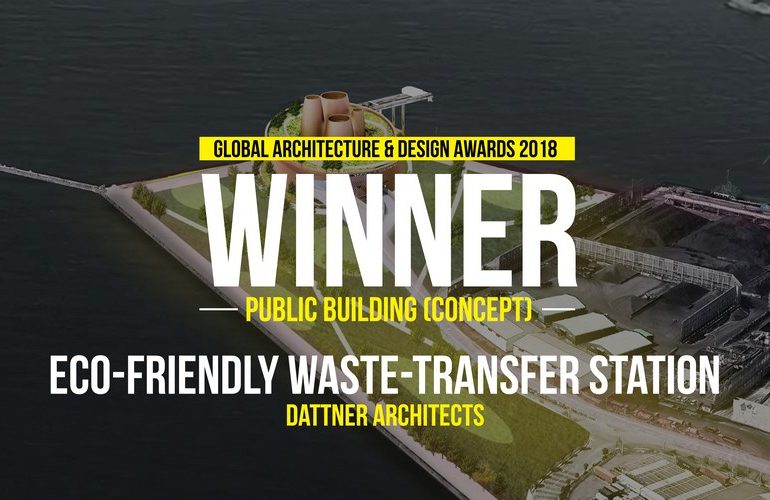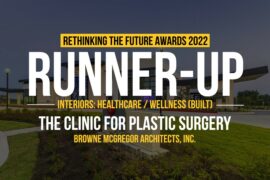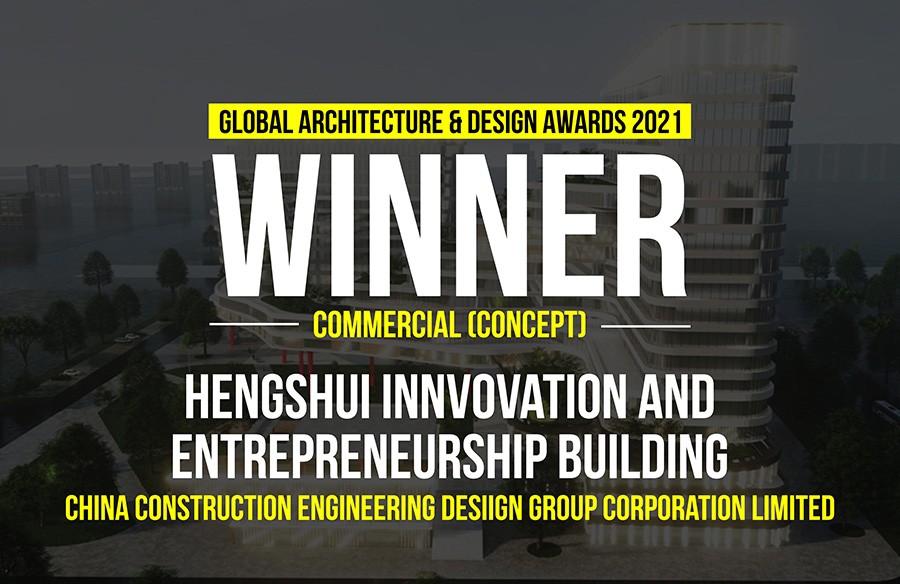Late Twentieth Century cities developed ecological solutions to the problem of waste disposal by recycling, large scale composting, converting garbage into alternate energy through incineration or creating new landforms out of municipal waste. These measures offset some of the pollution to land, water, and air associated with trash disposal. The challenge of the new millennium is to take these advances further towards the idealized frontier of Zero Waste—reducing the amount unproductive, un-recycled, or un-converted waste to a minimum and reduce production of greenhouse gases associated with these measures as much as possible.
Global Architecture & Design Awards 2018
First Award | Category: Public Building (Concept)
Architects: Dattner Architects
Country: United States
 Our proposal uses a pioneering technology that works by converting trash into a synthesis gas or “syngas,” mostly hydrogen and carbon monoxide, as well as a small volume of ecologically harmless materials that can be used for industrial and construction uses. The Plasma Arc technology uses trash as feedstock for the gasification process. The process occurs in a low oxygen environment, so there is no combustion or emissions into the atmosphere. The syngas is cooled and scrubbed of impurities into a highly refined fuel. Any leftover material is cooled from a liquid into an inert, glasslike material. The thermal energy generated during the process is turned into steam, which powers turbines to generate electricity, for plant operations or directed into the municipal electric grid. The syngas is not burned on site, but shipped or piped to a clean burning incinerator that produces green power on a large scale.
Our proposal uses a pioneering technology that works by converting trash into a synthesis gas or “syngas,” mostly hydrogen and carbon monoxide, as well as a small volume of ecologically harmless materials that can be used for industrial and construction uses. The Plasma Arc technology uses trash as feedstock for the gasification process. The process occurs in a low oxygen environment, so there is no combustion or emissions into the atmosphere. The syngas is cooled and scrubbed of impurities into a highly refined fuel. Any leftover material is cooled from a liquid into an inert, glasslike material. The thermal energy generated during the process is turned into steam, which powers turbines to generate electricity, for plant operations or directed into the municipal electric grid. The syngas is not burned on site, but shipped or piped to a clean burning incinerator that produces green power on a large scale.
 These new Plasma Plants are municipal prototypes and future waterfront landmarks. The processing equipment is concentrated in a circular plan to minimizes its footprint and allow it to be integrated into a limited area. A perforated mesh skin shields the truck ramp and conveyer areas and prevents unauthorized access. Sightseers climbing up the spiral walkway to a rooftop park will be able to see and understand the process happening inside. A series of “hives” enclosing the largest pieces of equipment appear as features in the landscape.
These new Plasma Plants are municipal prototypes and future waterfront landmarks. The processing equipment is concentrated in a circular plan to minimizes its footprint and allow it to be integrated into a limited area. A perforated mesh skin shields the truck ramp and conveyer areas and prevents unauthorized access. Sightseers climbing up the spiral walkway to a rooftop park will be able to see and understand the process happening inside. A series of “hives” enclosing the largest pieces of equipment appear as features in the landscape.
In addition to its environmental benefits, these structures will also bridge the distinction between infrastructure and civic spaces, allowing current and future city inhabitants to understand their place in the urban eco-system.
 Three cities illustrate the global potential of Plasma Power Technology:
Three cities illustrate the global potential of Plasma Power Technology:
New York City. Today, only 25% of NYC’s solid waste is recycled or composted. To meet its Zero Waste goal in 2030, Plasma Plants will replace the City’s existing Five Marine Transfer Stations that now ship trash to landfills.
Norway is already a leader in waste to energy conversion and imports trash on the international market as source of fuel. A Plasma Plant on the Oslo waterfront will complement a conventional waste to energy operation in Klemetsrud, in the city suburbs.
 Densely populated Japan has been a pioneer of trash based land creation in Tokyo and other port cities. A plasma plant on an existing artificial Island in the Tokyo Bay will be integrated into the Umi-No-Mori public park now under construction.
Densely populated Japan has been a pioneer of trash based land creation in Tokyo and other port cities. A plasma plant on an existing artificial Island in the Tokyo Bay will be integrated into the Umi-No-Mori public park now under construction.
If you’ve missed participating in this award, don’t worry. RTF’s next series of Awards for Excellence in Architecture & Design – is open for Registration.
Click Here








